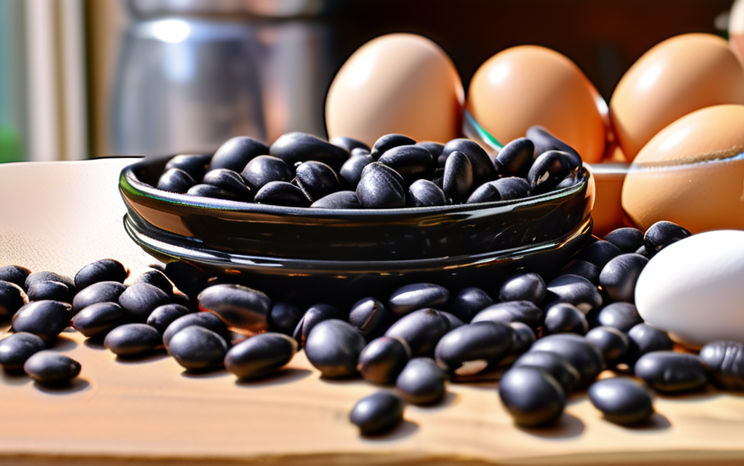What 30g Protein Looks Like Video
Protein is a vital macronutrient that plays a crucial role in building and repairing tissues, making enzymes and hormones, and providing structural support to cells and organs. It's essential for muscle growth, immune function, and overall health. Understanding how to effectively incorporate 30 grams of protein into your diet can help you meet your nutritional goals, whether you're looking to build muscle, lose weight, or simply maintain a balanced diet. This article explores various sources of protein and illustrates what 30 grams of protein looks like in everyday foods.
The Importance of Protein
Protein is essential for the growth and repair of body tissues, and it is also necessary for the production of hormones and enzymes. It helps build muscle, skin, and blood, and it can also serve as a source of energy when carbohydrates are scarce. A sufficient intake of protein is crucial for maintaining muscle mass, especially in aging populations, and for supporting a healthy immune system.
Daily Protein Intake Recommendations
The Recommended Dietary Allowance (RDA) for protein for most adults is 0.8 grams of protein per kilogram of body weight per day. This means an average sedentary adult should aim to consume roughly:
- - 56 grams per day for men
- - 46 grams per day for women
Athletes or those with more physically demanding lifestyles may need more protein to support muscle repair and growth. Pregnant and breastfeeding women should also increase their protein intake to support fetal and newborn growth.
Examples of What 30 Grams of Protein Looks Like
1. Tuna
- Quantity: 2 small cans
- Calories: 185
- Description: Tuna is a lean source of protein that also provides important nutrients like omega-3 fatty acids. Two small cans of tuna make an easy, protein-rich addition to salads, sandwiches, or can be enjoyed straight from the can.
2. Black Beans
- Quantity: 2 cans
- Calories: 440
- Description: Black beans are not only rich in protein but also high in fiber, which helps with digestive health and satiety. Two cans of black beans can be incorporated into dishes like tacos, soups, or homemade veggie burgers for a hearty protein boost.
3. Salami
- Quantity: 200g
- Calories: 570
- Description: While salami is a protein source, it is also high in fat and calories. Consuming 200g of salami provides a substantial amount of protein but should be eaten in moderation due to its high sodium and saturated fat content.
4. Greek Yogurt
- Quantity: 1.5 cups
- Calories: 225
- Description: Greek yogurt is an excellent source of protein and is also rich in calcium and probiotics. 1.5 cups of Greek yogurt can serve as a filling breakfast or snack, perfect for mixing with fruits or honey.
5. Eggs
- Quantity: 5 eggs
- Calories: 360
- Description: Eggs are a complete protein source, containing all nine essential amino acids. Five eggs provide a substantial protein intake and can be prepared in various ways, from boiled to scrambled, making them a versatile option.
6. Almonds
- Quantity: 150g
- Calories: 920
- Description: Almonds are a good source of protein, healthy fats, and vitamin E. While they are calorie-dense, 150g of almonds can be a great snack to boost protein and energy, especially when consumed throughout the day.
7. Peanut Butter
- Quantity: 160g
- Calories: 910
- Description: Peanut butter is another calorie-dense but protein-rich food, ideal for spreading on toast or blending into smoothies. 160g of peanut butter provides a significant amount of protein alongside healthy fats.
8. Protein Powder
- Quantity: 40g
- Calories: 160
- Description: Protein powder is a concentrated source of protein often used in shakes or added to meals for an extra protein boost. 40g of protein powder is typically enough to provide around 30 grams of protein, making it a convenient option for post-workout recovery.

Conclusion
Understanding what 30 grams of protein looks like in various foods can help you make informed dietary choices to meet your protein needs. Whether you prefer plant-based sources like beans or animal products like tuna and yogurt, there are numerous ways to integrate protein into your meals effectively. Balancing protein intake with other nutrients and considering the caloric content of protein-rich foods are essential for maintaining a healthy and balanced diet.
Disclaimer: This blog post is for informational purposes only and does not constitute medical advice. Always consult with a healthcare professional before making significant changes to your diet, especially if you have specific health conditions or dietary needs.
Ready to level-up?
Create meal plans 10x faster, follow up with your clients through our mobile app, and never struggle with meal planning or recipe management again.